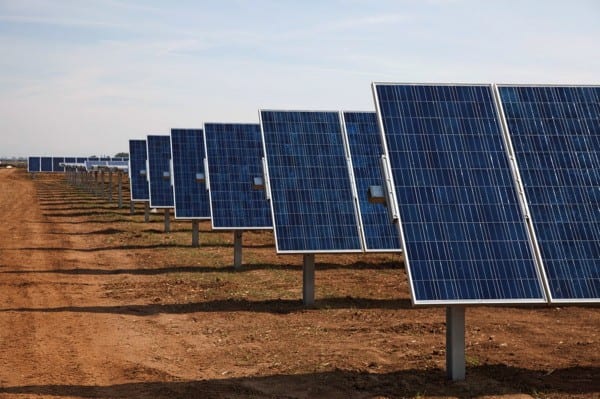There were two gigawatt-scale announcements from Asia last week, from the world’s two most populous countries: China announced that it added 3.3GW of solar capacity in the first half of the year while India said it would provide low-cost loans and grants to install as much as 20GW of new solar capacity.
China’s PV capacity addition is expected to accelerate further in the second half of the year given that the government has set a target of 10GW for the year, and a stretch goal of 14GW has also been discussed.
Utility-scale PV plants accounted for 2.3GW of the new capacity, with distributed projects comprising the rest, according to data from China’s National Energy Administration. The government may announce further incentives shortly to encourage distributed generation, which causes less strain on the transmission grid.
In India, the government is working on a scheme for large solar parks ranging from 500MW to 1GW in size. Government subsidies will keep the price of land within parks low to contain project cost, Tarun Kapoor, joint secretary in the Ministry of New and Renewable Energy said in an interview with Bloomberg News.
Power-deficit India is eyeing solar as one of the options to plug the gap. Large-scale plants will help drive down costs. A December 2013 study by the Power Grid Corporation of India estimated a potential of 270GW of solar projects in the hot and cold deserts of the country where most of these parks may be built.
State utilities will be expected to purchase at least 20% of the power generated at these parks. Project owners will be free to export the remainder to consumers anywhere in the country. That would require a robust transmission grid.
India also began work on upgrading its grid to accommodate renewable capacity as part of the USD 8bn ‘Green Energy Corridor’ project. Germany’s KfW will lend an initial EUR 250m for the enhancement. The first bids have been invited for the states of Rajasthan and Tamil Nadu.
With the incentives announced in the annual budget of India’s new government, including easing of lending norms and reinstatement of accelerated depreciation benefits for the wind sector, Bloomberg New Energy Finance has revised upwards its capacity and financing projections for the second half of this year, and for 2015.
China was last week in the news for announcing plans for regulating the price of electricity for automobiles. The per-mile energy costs to drivers of electric cars should be about 30% lower than the cost to those who use fossil fuel to power an internal combustion engine vehicle, Li Caihua, deputy director of the pricing department at the National Development and Reform Commission, told state-run China Daily newspaper.
In the US, electric mobility was moving to a new level, with solar manufacturer Sunpower offering to bundle solar panel and battery systems with the purchase of Volkswagen hybrids from next year. SunPower has similar marketing agreements with Ford Motor and Nissan Motor, but the agreement with Volkswagen includes an option for battery storage that the company is not providing to other customers.
Another kind of sun power got a boost last week, when the European Investment Bank and the Development Bank of Southern Africa signed a USD 130m contract to finance the 100MW KaXu solar thermal plant in South Africa.
In the niche sector of wave and tidal energy, Bloomberg New Energy Finance revised its 2020 forecasts for installation. The projected capacities for wave power and tidal stream installations were lowered. For tidal range however, the capacity for 2020 is projected at 855MW instead of the 732MW estimated earlier. A comprehensive snapshot of the sector can be found in our note: Wave and tidal, H2 2014 – low pressure, choppy seas.








